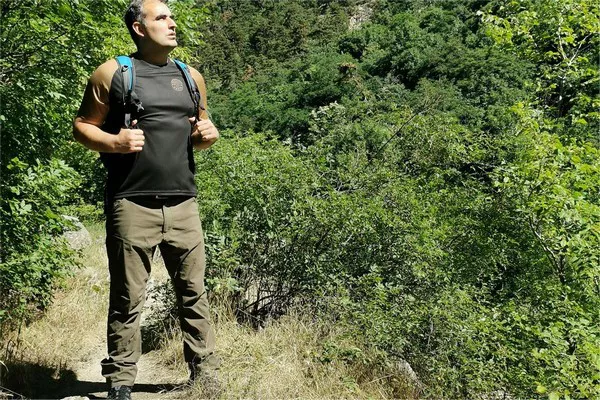Rock climbing is an exhilarating sport that requires physical strength, mental focus, and proper attire. Wearing the right clothing can enhance your climbing experience, improve your performance, and ensure your safety. This article provides a comprehensive guide on what to wear when rock climbing, covering various types of clothing and accessories suitable for different climbing environments and conditions.
Choosing the Right Climbing Clothing
When selecting climbing clothing, comfort, flexibility, and durability are crucial. Your clothes should allow for a full range of motion and withstand the rough surfaces you may encounter. The layering system is an effective way to manage your body temperature and stay comfortable during your climb.
Climbing Tops
T-shirts and Tank Tops
For warm weather climbing, lightweight and breathable t-shirts or tank tops are ideal. They should wick moisture away from your skin, keeping you dry and comfortable. Look for materials like polyester or merino wool that offer good moisture management.
Long Sleeves and Hoodies
Long sleeves provide extra protection from the sun and abrasions. They are also useful in cooler weather. Hoodies can offer additional warmth and can be layered over a t-shirt. Opt for stretchy fabrics that won’t restrict your movement.
Jackets and Outer Layers
For colder conditions or high-altitude climbs, a good jacket is essential. Softshell jackets offer a balance of breathability and weather resistance, while hardshell jackets provide maximum protection against wind and rain. Insulated jackets are useful for very cold environments.
Climbing Bottoms
Shorts
Shorts are great for hot weather climbing. They should be lightweight, durable, and offer good freedom of movement. Look for designs with gusseted crotches or stretchy panels.
Pants
Climbing pants are versatile and provide protection against scrapes and weather. Choose pants made from stretchy, durable materials. Features like articulated knees and reinforced areas can enhance durability and comfort.
Leggings
Leggings or tights can be worn alone in warm weather or as a base layer in colder conditions. They should offer good stretch and support. Some climbers prefer leggings for their minimal bulk and unrestricted movement.
Footwear for Climbing
Climbing Shoes
Climbing shoes are a critical piece of gear. They should fit snugly but not painfully tight. The type of climbing you do will influence your shoe choice. Bouldering shoes are often more aggressive, while trad climbing shoes prioritize comfort for long climbs.
Approach Shoes
Approach shoes are designed for the hike to the climbing site. They offer good support and traction for scrambling over rocky terrain. Some climbers also use them for easy climbing routes.
Socks
Thin, moisture-wicking socks are best for climbing. Some climbers prefer no socks for a better fit in their climbing shoes, but thin socks can help prevent blisters and add comfort.
Climbing Accessories
Hats and Headbands
Hats can protect your face from the sun and keep sweat out of your eyes. Headbands are also useful for managing sweat and keeping hair out of your face.
Gloves
Gloves are not typically used for climbing, but fingerless gloves or tape can protect your hands during long climbs or aid in belaying.
Belts
A lightweight, low-profile belt can help keep your pants in place without adding bulk or interfering with your harness.
Climbing Gear
Harness
Your harness is a critical part of your climbing gear. It should fit well and be comfortable for long periods. Look for harnesses with adjustable leg loops and plenty of gear loops.
Helmet
A climbing helmet protects your head from falling rocks and impacts. It should fit snugly and comfortably, with good ventilation and adjustability.
Chalk and Chalk Bags
Chalk helps keep your hands dry and improves your grip. Chalk bags should be easily accessible and large enough to hold enough chalk for your climb.
Seasonal Considerations
Summer Climbing Attire
In summer, focus on lightweight, breathable clothing. Sun protection is crucial, so consider long sleeves, hats, and sunscreen.
Winter Climbing Attire
In winter, layering is key. Start with a moisture-wicking base layer, add an insulating layer, and top it with a weather-resistant outer layer. Keep your extremities warm with gloves, hats, and thermal socks.
Specialized Clothing for Different Types of Climbing
Indoor Climbing
Indoor climbing typically requires minimal clothing. Lightweight, comfortable clothes that allow for a full range of motion are ideal.
Outdoor Bouldering
For bouldering, durable clothing that can withstand rough surfaces is important. Shorts or pants with reinforced areas can be beneficial.
Sport Climbing
Sport climbing involves more gear, so clothes should accommodate a harness and gear loops. Breathable, moisture-wicking fabrics are essential.
Trad Climbing
Trad climbing often involves longer routes, so comfort and durability are key. Clothing should protect against the elements and rough surfaces.
Alpine Climbing
Alpine climbing requires clothing that can handle extreme conditions. Layering is crucial, and clothes should be highly durable and weather-resistant.
See Also: The 5 Best All Mountain Park Skis for Every Skier
Maintenance and Care of Climbing Clothing
Proper care of your climbing clothing will extend its lifespan. Follow the manufacturer’s washing instructions. Avoid using fabric softeners, as they can reduce the performance of technical fabrics. Repair any tears or damage promptly, and store your clothing in a cool, dry place.
Brands and Recommendations
There are many great brands that specialize in climbing clothing. Some top brands include Patagonia, Black Diamond, Arc’teryx, and The North Face. Look for products that meet your specific needs and preferences.
Sustainable and Ethical Clothing Choices
Many brands now offer eco-friendly and ethically produced climbing clothing. Look for items made from recycled materials or those certified by organizations like Fair Trade.
Conclusion
Choosing the right clothing for rock climbing can significantly enhance your climbing experience. Consider the type of climbing you’ll be doing, the weather conditions, and your personal preferences when selecting your gear. With the right clothing, you’ll be comfortable, protected, and ready to tackle any climbing challenge.

